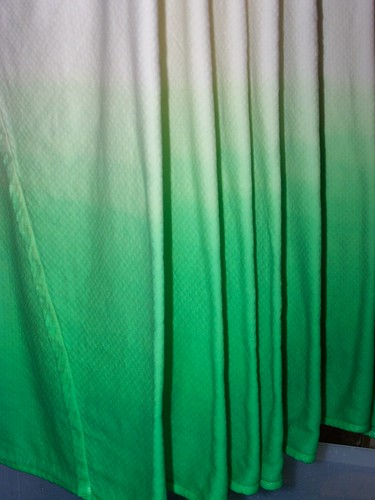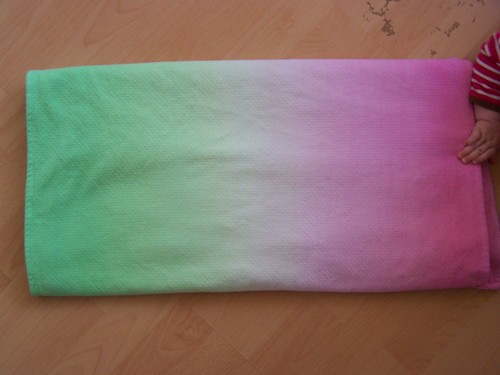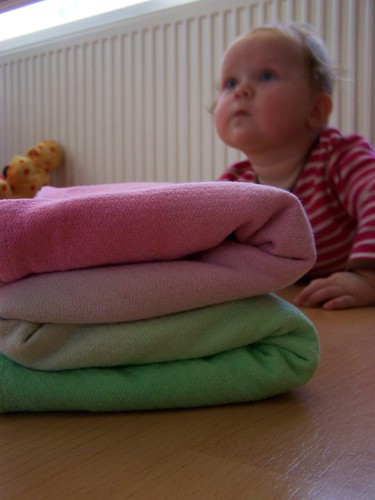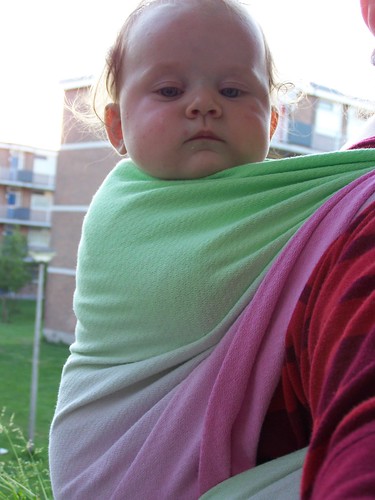Monday 29 June 2009
No turning back
Tuesday 23 June 2009
It's too hot for a post of my own...
An Idea Still Looking for Traction in Kenya
East African Women Vote With Their Feet Against Baby Strollers
By Emily WaxWashington Post Foreign Service
Tuesday, May 18, 2004; Page A08
NAIROBI, Kenya -- Irene Wambui can't imagine why anyone would buy a baby stroller. She says she sees it as a cold cage filled with useless rattles, cup holders and mirrored headlights. Imagine children being stuffed into such a contraption and pushed around town like some kind of pet.
Yet here she is in the middle-class Westlands shopping district, trying to sell her store's newest merchandise, the four-wheeled plastic and metal tool of modern motherhood. But so far, strollers have been a flop in Nairobi, an affront to a time-honored tradition. Across Africa, women can be seen carrying sleeping or sometimes giggly babies on their backs, swathed in cloth. The babies move to the sway of their mothers' hips, synchronized throughout the day, bending with them as they collect water or sweep the floor and rising again when the women stop to rest. They hang on as their mothers sell food in the market or pray at a church or mosque.
The introduction of strollers and baby carriages, both known here by the British word "pram", horrifies traditionalists, even someone such as Wambui, who sells them. The stroller is appearing in major cities around Africa, but so far has not been a hit.
"It's not so wonderful. In Africa, we just carry our children or let them roam. They can't sit like lumps," said Wambui, 24. "Besides our roads aren't even good enough for these devices. If everyone had a pram it would cause jam-ups in traffic. Then we would be bad to our children and bad to our roads."
Irene's boss and manager, Zara Esmail, was pacing back in forth in front of the strollers one recent day. She said the store had sold only one baby stroller in two months, and that was to a visiting U.N. worker from Britain, who complained later that she had been disappointed by the small selection.
"In general, I thought they would sell far better," Esmail said. Perhaps, she added, it's a question of directing more advertising toward middle-class, working moms. "We thought these modern ones would be a hit."
The stroller has sparked debate among African pediatricians who think the device -- first crafted as a labor-saving tool for the European middle class -- may damage the relationship between a mother and a child.
"The pram is the ultimate in pushing the baby away from you," said Frank Njenga, a child psychiatrist in Nairobi, Kenya's bustling capital. "The baby on the back is actually following the mother in warmth and comfort. The baby feels safer, and safer people are happier people."
In the United States and Europe, strollers have long been controversial. Recently, some doctors and child psychologists have blamed them for everything from pediatric obesity to low self-esteem later in life.
Jane Clark, professor of kinesiology at the University of Maryland, said there is concern that Americans are overusing strollers for older children, causing toddlers to be less physically active. A growing movement among child advocates promotes the idea of carrying babies more and getting them out of their strollers.
At the same time, Web sites and magazines in the United States and Europe dedicate a lot of space to the subject of choosing a style of stroller or carriage -- front-to-back or side-by-side, a jogger or a sleeper, with or without a lightweight titanium frame, pneumatic tires, rear suspension, mud flaps and/or battery-operated blinkers. Some European-made antique carriages are status symbols for celebrities such as Madonna and Celine Dion, who spent $2,600 on the classic Balmoral Pram, described by some Web reviewers as a tiny Humvee.
Africans consider the traditional method of toting their children the only true version of day care. When it's time for feeding, the food is right there as a mother shifts her child to the front of her body, nestling the infant to her breast. The baby stroller could change all of that. But many people here said they thought the devices would be just another instance of Africans adopting the worst habits of industrialization.
"There are customs from a hundred years ago that are not relevant today for Africans. Our challenge is to pick the good from the bad," said Carol Mandi, managing editor of EVE, an East African women's magazine. "But carrying on your back, well, that is just a wonderful custom that keeps the baby emotionally stable and lets the mother feel bonded. We can't stop being African women just because we are suddenly thrust into the modern world. What next? They will tell us to stop breast feeding in public? No way."
Some women in Africa at first apparently hoped the stroller could help reduce the physical exhaustion suffered by mothers, the backbone of Africa's labor force in both domestic duties and small-scale businesses.
But because the pram is not only socially unacceptable but expensive, merchants are finding they aren't selling. The average pram, though far cheaper than some car-like U.S. models, still hovers around $60, at least half a month's wages even in Africa's most successful urban economies.
At the baby store in Nairobi where Wambui works, dusty models sat untouched.
"We've never used a pram. They are a bit pricey," said Nellie Mwanzia, who was shopping nearby while her husband, Roy, carried their 20-month-old son, David. "Just carrying the baby is no bother. It's more personal."
Mary Mwanzia, 32, a mother and part-time government secretary, popped into the store to buy baby bottles. Esmail corralled her potential buyer over to the strollers. But Mwanzia, even with her modern job and her braided red hair extensions and bell-bottom jeans, found the baby buggies "oppressive."
Esmail suggested a test drive. Mwanzia was not having it.
"It's just not Kenyan," she said. "For the child, the love will not be there if the child is cooped up in such an antisocial device." She purchased her bottles and left.
Monday 22 June 2009
For Sale
Friday 12 June 2009
Doe maar

It looks like a bunch of leeks!
The pink dye looked too light in the tub but it turned out to bre pretty balanced with the soft green color.
There is still a blanco didy indio hemp in my cupboard. Waiting forever until I get inspired to dye it. I should sell it after dying though, there is no point in adding yet another wrap to my stash.
What do you think, would a raspberry chocolate gradation be nice?

Ah yes.... yes yes yes... that would be quite nice!
vroooooom...








